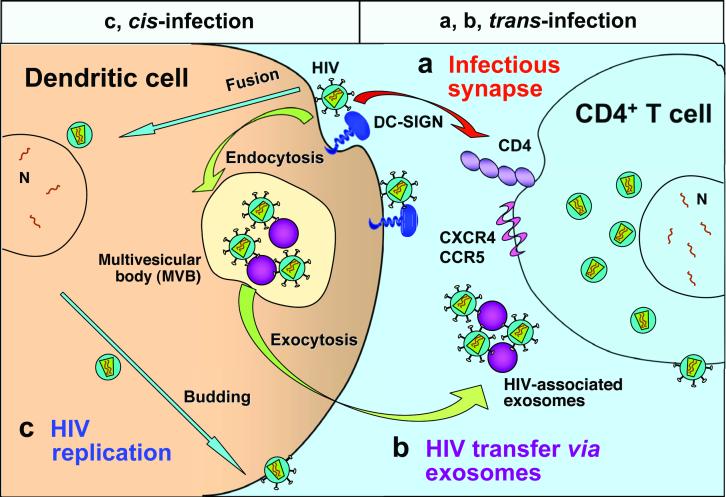Figure 3.
Mechanisms of dendritic-cell-mediated HIV transmission. Two types of dendritic cell (DC)-mediated HIV transmission have been proposed, namely, trans- and cis-infection of DCs. Trans-infection of DCs includes two pathways: (a). HIV transmission across the infectious synapse. DCs transfer captured HIV to target CD4+ T cells through the cell-cell junctions known as infectious synapses. DC-specific intercellular adhesion molecule 3-grabbing nonintegrin (DC-SIGN) participates in formation of the infectious synapse. (b). Exocytotic pathway of HIV-bearing exosomes. Endocytosed HIV can gain access to endosomal multivesicular bodies (MVBs), enabling release as exosome-associated viruses. Exosome-associated HIV particles are likely to be transmitted to CD4+ T cells through membrane binding and fusion. Cis-infection: (c). After the initial viral exposure, HIV infection and replication in DCs results in de novo viral production and long-term transmission. It is conceivable that these three mechanisms coexist in vitro, however, the relative importance of these pathways in vivo remains to be investigated. CCR5, CC chemokine receptor 5; CXCR4, CXC chemokine receptor 4.

